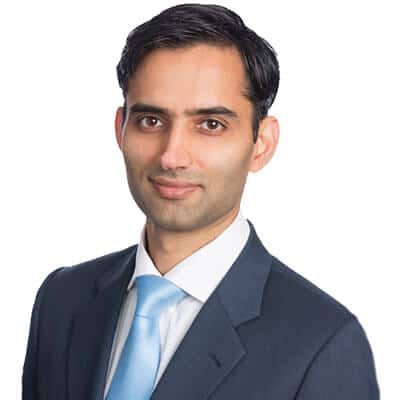Stockholm (HedgeNordic) – Emerging markets in the Asia-Pacific region, such as China, India, Indonesia, the Philippines, Thailand and Vietnam, have experienced significant economic expansion fueled by the growing affluence and spending power of the middle class. The emulation of resource-intensive Western lifestyles can carry profound economic and social implications, including unintended and potentially adverse consequences. Recognizing these dynamics, Oscar Yang and Manish Bishnoi at Impax Asset Management are scanning this region for public companies that drive sustainable, less resource-intensive growth in the region.

“The Asia Pacific region now has more than half of the world’s population, yet most regions face significant energy and resource constraints,” notes portfolio manager Manish Bishnoi, who runs the Impax Asian Environmental Markets strategy alongside senior portfolio manager Oscar Yang. “This is a growing region with rising aspirations and a rising middle class,” he emphasizes. However, Bishnoi emphasizes that relying on the traditional, energy-hungry growth model of the past few decades is not viable in this region.
“The Asia Pacific region now has more than half of the world’s population, yet most regions face significant energy and resource constraints.”
This transition from a resource-depleting economy, “where you take more from the planet to grow,” to a more sustainable model creates ample investment opportunities for investors. The Impax Asian Environmental Markets strategy is focused on identifying such opportunities emerging from this shift towards a more sustainable economy. Specifically, the team aims to pinpoint companies developing innovative solutions to address resource challenges in these markets, addressing long-term macroeconomic themes such as population growth, improving living standards, urbanization, rising consumption, and the depletion of finite natural resources.
Key Themes
One important theme unfolding in the Asian-Pacific region is rapid urbanization, a trend fraught with challenges. “About two-thirds of the world’s largest megacities are now in Asia, which puts unique strains on urban infrastructure, from sanitation and clean water to air quality,” explains Bishnoi. “This rapid urbanization amid constrained resources means that we want businesses that address societal issues like pollution and improving quality of life,” he elaborates. Bishnoi and co-portfolio manager Oscar Yang are on the lookout for businesses such as producers of e-bikes and electric vehicles that address urbanization-related challenges.
“This rapid urbanization amid constrained resources means that we want businesses that address societal issues like pollution and improving quality of life.”
Another key trend capable of circumventing the resource-intensive traditional business model is the widespread adoption of technology. “Asia is a manufacturing hub for numerous cutting-edge technologies,” points out Bishnoi. Consequently, businesses in these markets exhibit a higher propensity for adopting technologies like automation, thereby enhancing efficiency. Additionally, the demographic evolution in the Asia-Pacific region also creates economic and social implications that can shape the path of sustainable growth in the region.
“Some parts of Asia are aging, while others are very young, as seen in the comparison between India versus Japan. The demographic in each region has its own distinct needs,” argues Bishnoi. “And each one of these needs leads to a specific solution,” he continues. Japan leads in automation due to its emphasis on energy efficiency and its aging society, whereas India is in the process of adopting this technology because it’s lagging behind the curve. “However, India has the potential to embrace these technologies and bypass some of the traditional growth models,” says Bishnoi.
The Selection
Recognizing the growth potential and the key trends across the Asia-Pacific region, Oscar Yang and Manish Bishnoi of Impax Asset Management aim to invest in companies poised to benefit from the transition to a more sustainable economy. Their approach begins with identifying companies offering solutions or products that facilitate sustainable growth with fewer resources. “Impax has developed a comprehensive environmental market taxonomy and every company that we own is placed in this taxonomy based on the percentage of revenue attributed to each classification in this taxonomy,” explains Bishnoi.
“Impax has developed a comprehensive environmental market taxonomy and every company that we own is placed in this taxonomy based on the percentage of revenue attributed to each classification in this taxonomy.”
Once these companies, deemed to be “on the right side of the transition,” are identified, the duo proceeds to fundamental analysis, which integrates environmental, social, and governance (ESG) aspects, along with the assessment of investment quality. “We evaluate whether the company possesses a strong enough business model to compete effectively and generate returns sufficient enough to compensate for the cost of capital needed to grow sustainably,” explains Bishnoi. Assessing the business quality also entails examining the ESG components. “We focus on key pillars such as corporate governance, adaptation to climate change, human capital management, among others.”
“We focus on key pillars such as corporate governance, adaptation to climate change, human capital management, among others.”
Finally, the team examines cash flows to estimate the company’s intrinsic value. “The best opportunities arise when we find companies trading below their intrinsic value, yet more importantly, exhibit consistent growth over a long period of time,” argues Bishnoi. In essence, the Impax Asian Environmental Markets strategy focuses on acquiring attractively priced, high-quality growth companies that foster sustainable, resource-efficient growth in the rapidly growing Asia-Pacific region.
Engagement
Along with Impax’s other actively managed thematic investment strategies, the Impax Asian Environmental Markets strategy relies on a taxonomy formation to identify companies that are set to benefit from the transition to a more sustainable economy. This same taxonomy formation serves as the foundation for the engagement initiatives led by Oscar Yang and Manish Bishnoi. The objective of engagement with investee companies includes monitoring, risk management and promotion of improved processes and disclosures, through company-specific or proxy-voting-related engagements.
“While emerging markets have historically been viewed as risky, the key lies in identifying opportunities where you can mitigate risks and grow sustainably. This is where alpha generation and returns for shareholders truly lie.”
“We have a comprehensive environmental market taxonomy and a well-established ESG evaluation framework, which serve as the driving elements behind our engagement,” explains Bishnoi. “While there is no perfect company, our aim is to continue helping them improve in areas where improvement may be needed,” he elaborates. “As a global investor, we know what is best in class. We are not activist investors, but we are proactive in engaging and improving our investments.”
“There is significant growth potential in emerging markets in the Asia-Pacific region,” concludes Bishnoi. The key, however, is to prioritize sustainable growth to mitigate risks and realize potential returns. “While emerging markets have historically been viewed as risky, the key lies in identifying opportunities where you can mitigate risks and grow sustainably. This is where alpha generation and returns for shareholders truly lie.”
